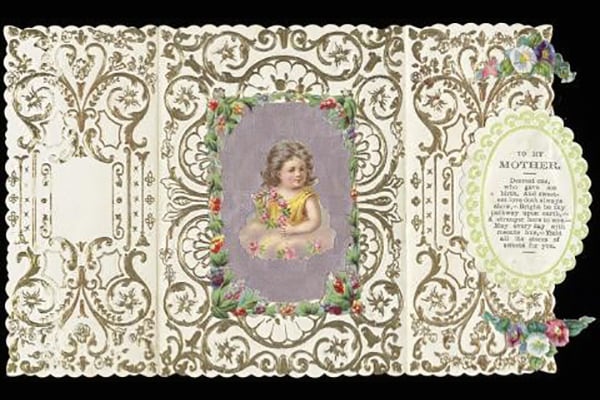Almost a third (31%)* will be sending gifts or cards to their mothers through the post for Mother’s Day this year. When it comes to presents, flowers and plants (51%); chocolate (21%); wine and champagne (13%); and handmade gifts (8%) are set to be the most popular gifts sent to mothers this year. Other popular gifts include books, candles, cakes and tea.
Mother’s Day Stamp Video
Alongside delivering physical gifts and cards for Mother’s Day, Royal Mail has a digital surprise for mums. Royal Mail’s new barcoded stamps enable users to watch and share exclusive videos by scanning the stamps in the Royal Mail App. One of the options is a Mother’s Day video, giving mothers and mother figures something extra to smile about when they receive cards in the post this year.
Gifts
The majority of those planning to buy a gift (70%) typically spend up to £40 on gifts for Mother’s Day. 23% spend between £41 and £100. However, 5% of people plan to spend over £100 to treat their mothers this year.
Mother’s Day isn’t just for mums! 14% of UK adults send Mother’s Day cards or gifts to other mother figures including stepmothers, aunts and grandmothers. And, almost 9% have sent or received a Mother’s Day card or gift from their pet.
Almost a sixth (14%) of those surveyed would consider using a parcel collection service to send their Mother’s Day gift. Online shoppers can use Royal Mail’s Parcel Collect to have their gifts collected from their doorstep. With this service, postmen and postwomen now collect parcels as well as deliver them on their daily round. Royal Mail’s Parcel Postboxes are another option for posting Mother’s Day gifts to loved ones. In order to use these services, customers simply need to ensure they have already paid the correct postage to send their item. If an item does not have pre-paid postage such as a return, customers are able to pay for their postage online with Click & Drop by visiting the Royal Mail App or website.
Although many children will be sending cards and gifts in the post this year, almost six in ten (59%) intend on seeing their mothers this Mother’s Day.
Royal Mail’s postmen and women love delivering cards and presents for Mother’s Day across the UK. After two years of lockdowns, this Mother’s Day is set to be extra special and our people will be doing their bit to make sure mums across the country feel really appreciated this year.
David Gold, Director of External Affairs & Policy, Royal Mail
The origins of celebrating mothers
The Mother’s Day that we know and love today in fact has an intriguing history that stretches back centuries, and originally bore no relation to mothers at all.
In the sixteenth century, returning to your home or “mother” church, was an important annual occasion. Each year, children who left home at a young age to work as domestic servants or apprentices were allowed a day off in the middle of lent to visit their mother church.
This became an important occasion for rare family reunions. Children returning home might bring a bunch of handpicked flowers to give to their mother. Home-baked Simnel cakes, a type of fruit cake topped with marzipan, could also be brought as gifts, as the Lenten fasting rules were relaxed for the day (so mums need not feel guilty about enjoying their treats).
The roots of Mothering Sunday in this country are unrelated to the American Mother’s Day celebration which falls in May. But we do owe the US for the modern revival of paying tribute to our mums.
The modern version of Mother’s Day took root in the US when Anna Jarvis formed a campaign to celebrate motherhood, following the death of her own mother in 1905. This led to the US celebration being established in 1914.
In the UK, the evolution of the religious holiday was largely attributed to Constance Smith, daughter of an Anglican clergyman living in Nottingham. She had read about Jarvis’ campaign and was inspired to publish a pamphlet entitled The Revival of Mothering Sunday. This resurgence of Mother’s Day was amplified by the First World War, when many mothers lost their sons.
Mother’s Day cards become popular
It was around this point that the widespread commercial phenomenon of Mother’s Day cards began. However, more unique examples of cards to mothers can be found from much earlier.
The card pictured above, dating to around 1860 and held by The Postal Museum, is gilt-embossed and decorated with fabric and floral pieces. A verse on the card reads:
Dearest one, who gave me birth,
And sweetest love doth always show,
Bright be thy pathway upon earth,
A stranger here to woe.
May every day with roseate hue
Yield all its stores of sweets for you.









